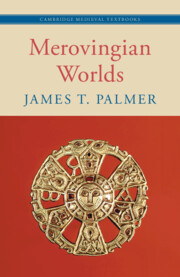Book contents
- Merovingian Worlds
- Cambridge Medieval Textbooks
- Merovingian Worlds
- Copyright page
- Contents
- Figures
- Maps
- Preface and Acknowledgements
- Note on Digitised Manuscripts
- Abbreviations
- Introduction
- 1 History and Its Historians
- 2 Identities and Status
- 3 Power in the Early Merovingian World (c. 450–613)
- 4 The Rise of the Shadow Kings (613–751)
- 5 Economies, People, and Nature
- 6 Literacy and Culture
- 7 The Frankish Churches
- 8 Religions and the Wider World
- Epilogue
- Bibliography
- Index
7 - The Frankish Churches
Published online by Cambridge University Press: 22 November 2024
- Merovingian Worlds
- Cambridge Medieval Textbooks
- Merovingian Worlds
- Copyright page
- Contents
- Figures
- Maps
- Preface and Acknowledgements
- Note on Digitised Manuscripts
- Abbreviations
- Introduction
- 1 History and Its Historians
- 2 Identities and Status
- 3 Power in the Early Merovingian World (c. 450–613)
- 4 The Rise of the Shadow Kings (613–751)
- 5 Economies, People, and Nature
- 6 Literacy and Culture
- 7 The Frankish Churches
- 8 Religions and the Wider World
- Epilogue
- Bibliography
- Index
Summary
This chapter provides a survey of ecclesiastical and monastic organisations and how lay people engaged with them. There was no singular ‘Frankish Church’. There was considerable variation in what people wanted, how the liturgy was arranged, access to church councils and books, and how communities connected to Roman, English, Irish, Spanish, or Byzantine religious worlds. Communities were united by relatively compact beliefs, not least the need for imminent moral reform and penance ahead of an inevitable appearance at Judgement Day – whether it was at hand or far in the future.
- Type
- Chapter
- Information
- Merovingian Worlds , pp. 208 - 237Publisher: Cambridge University PressPrint publication year: 2024

